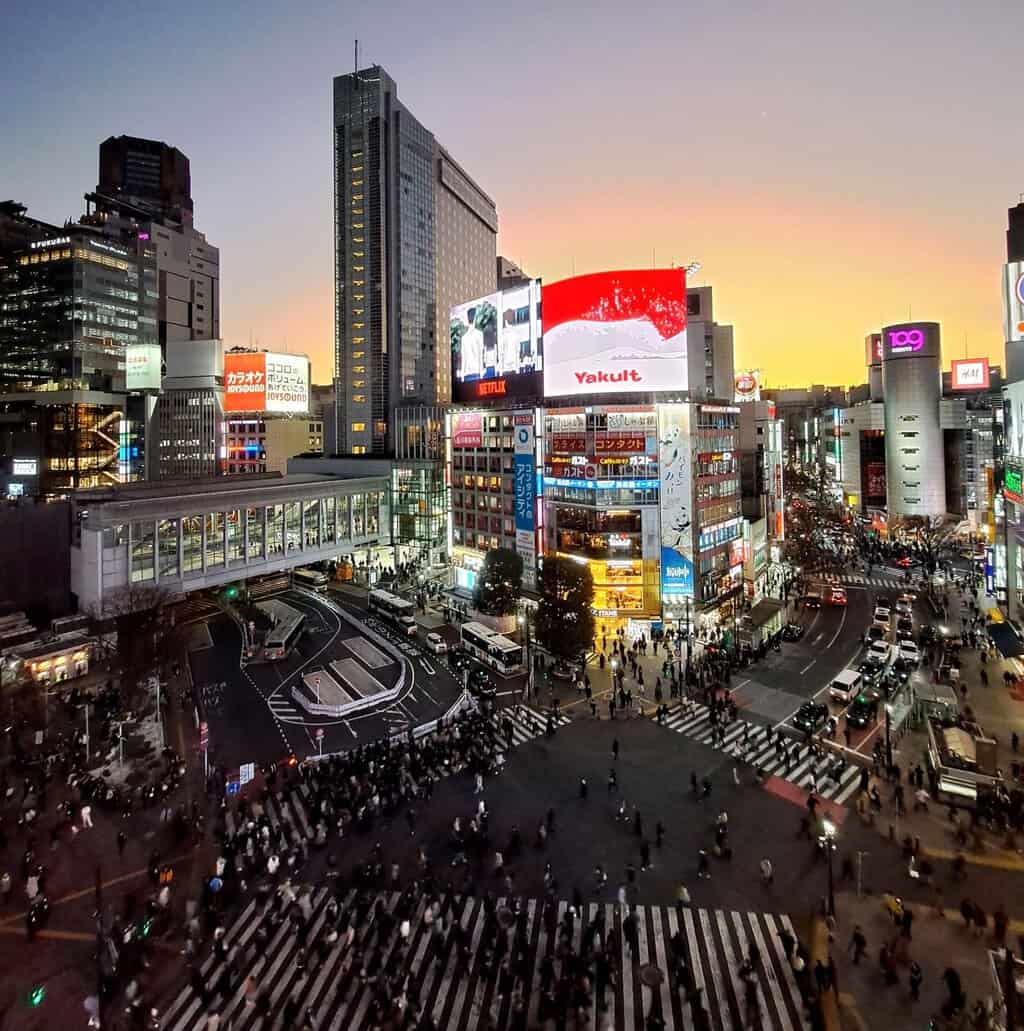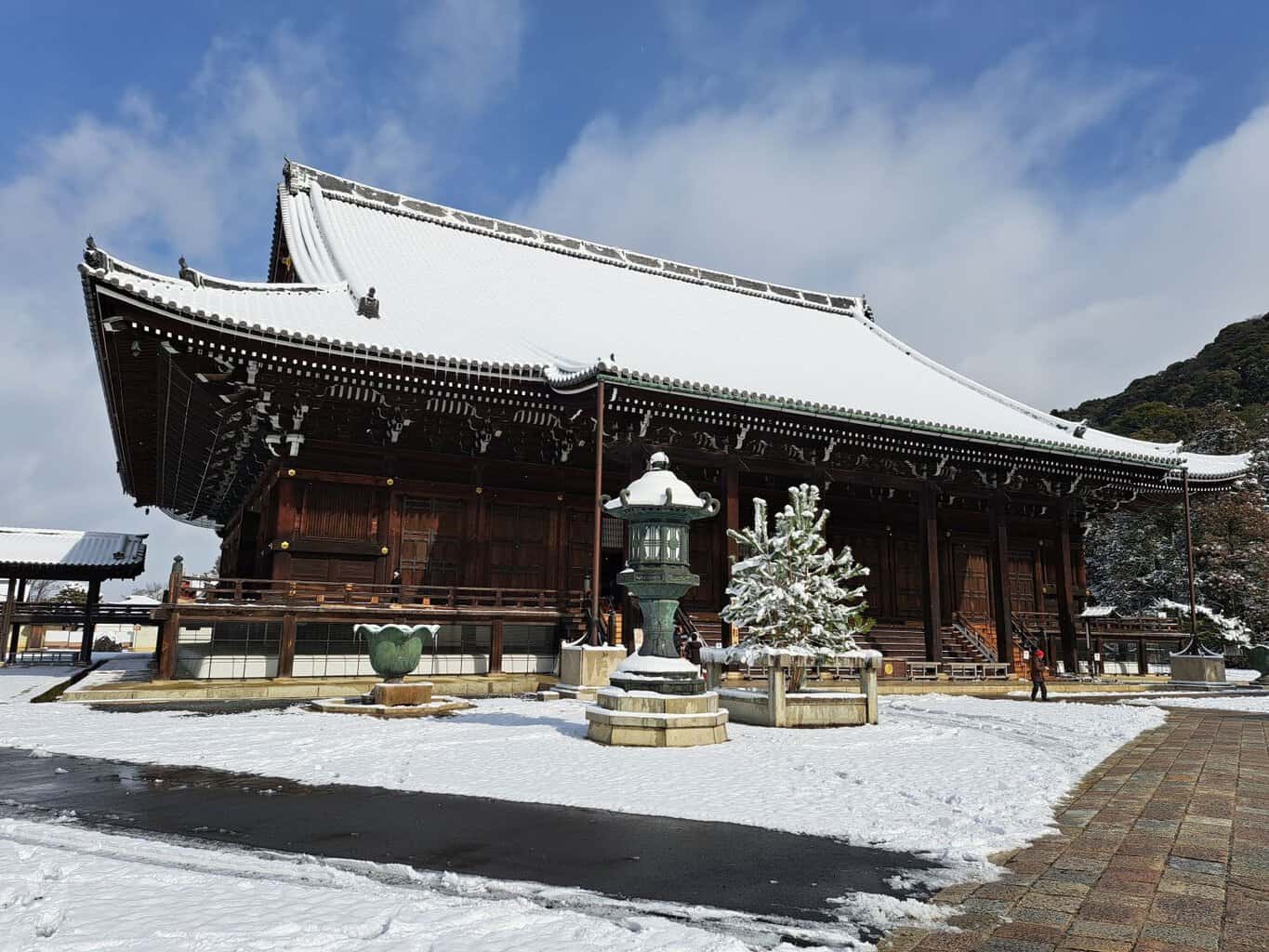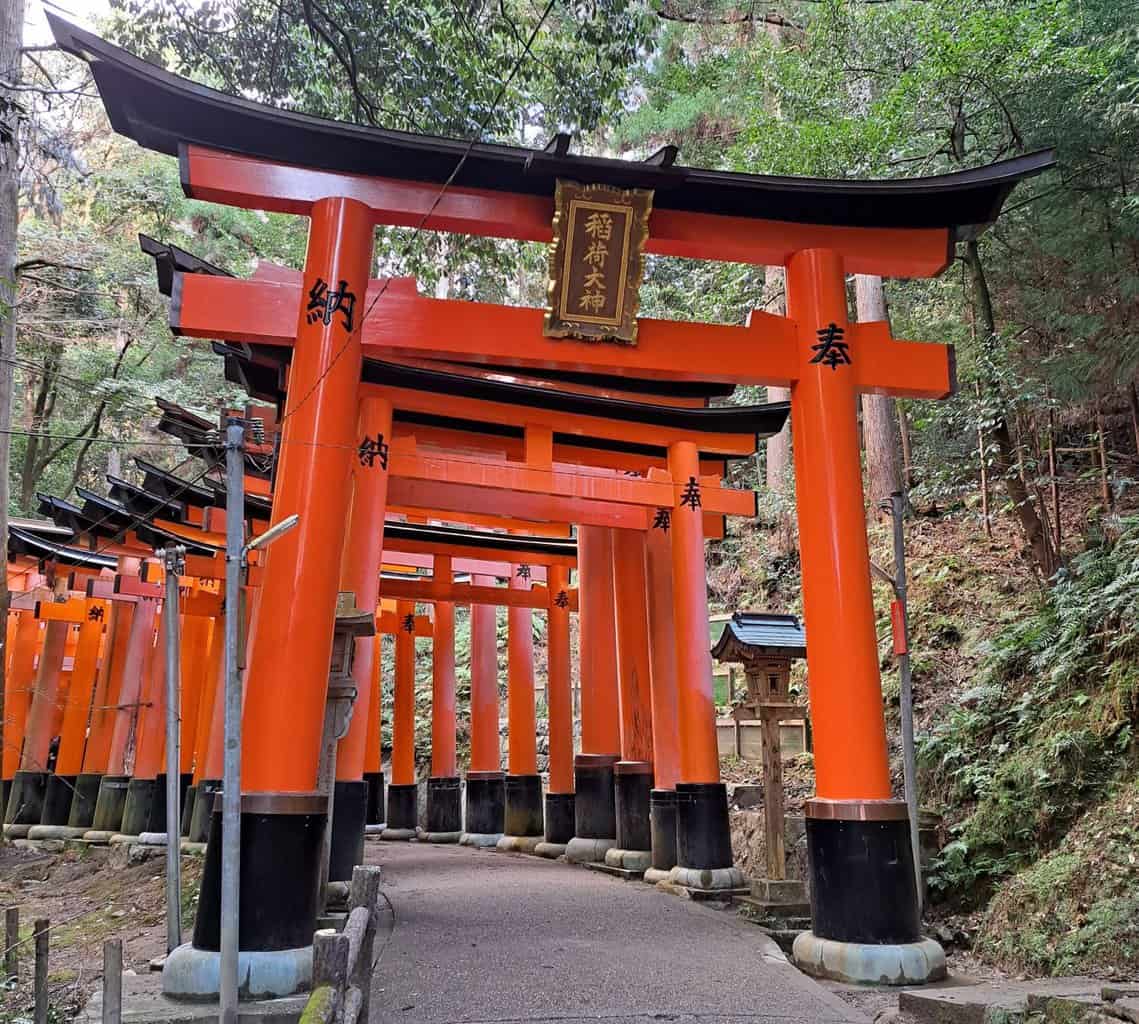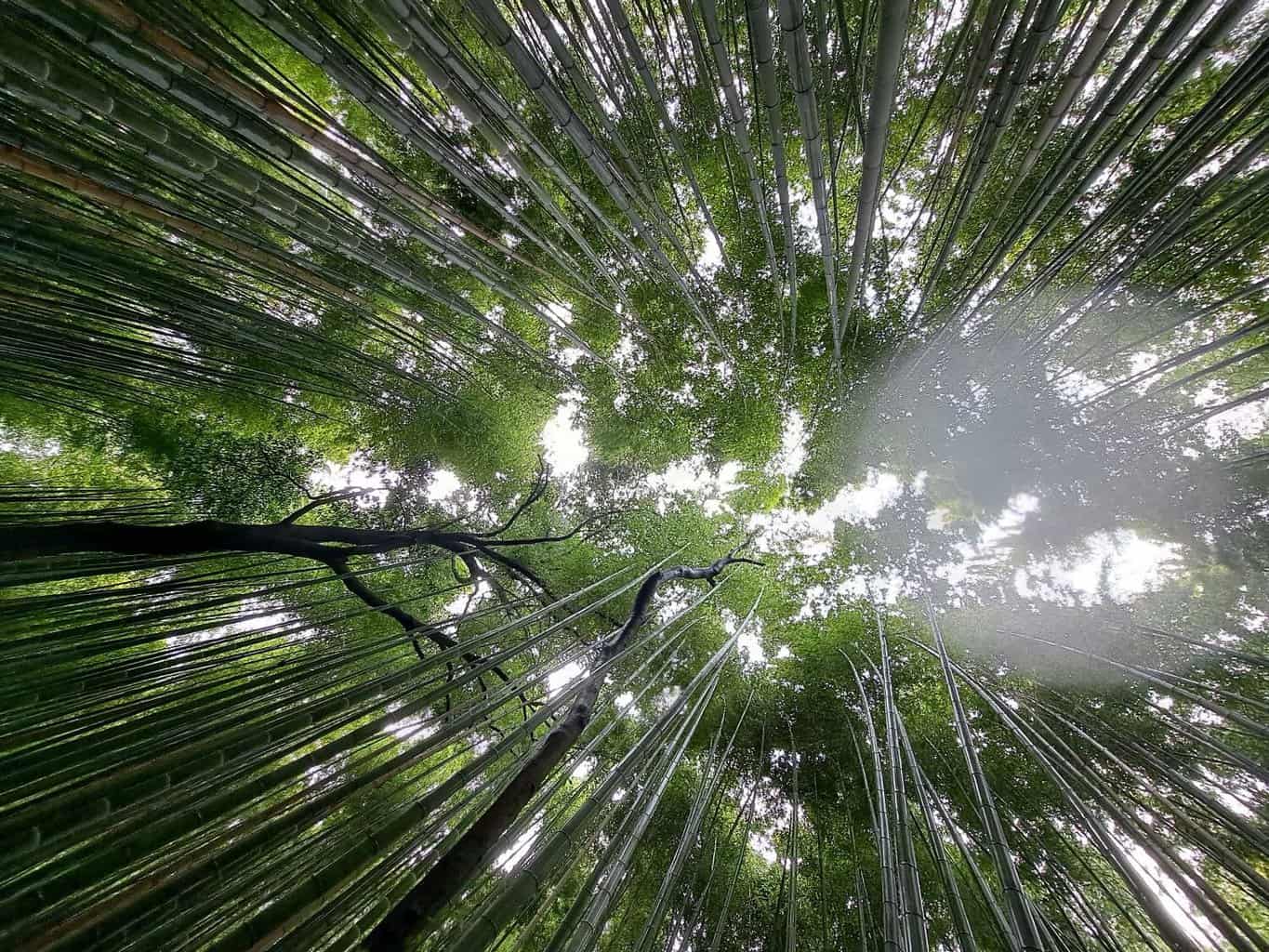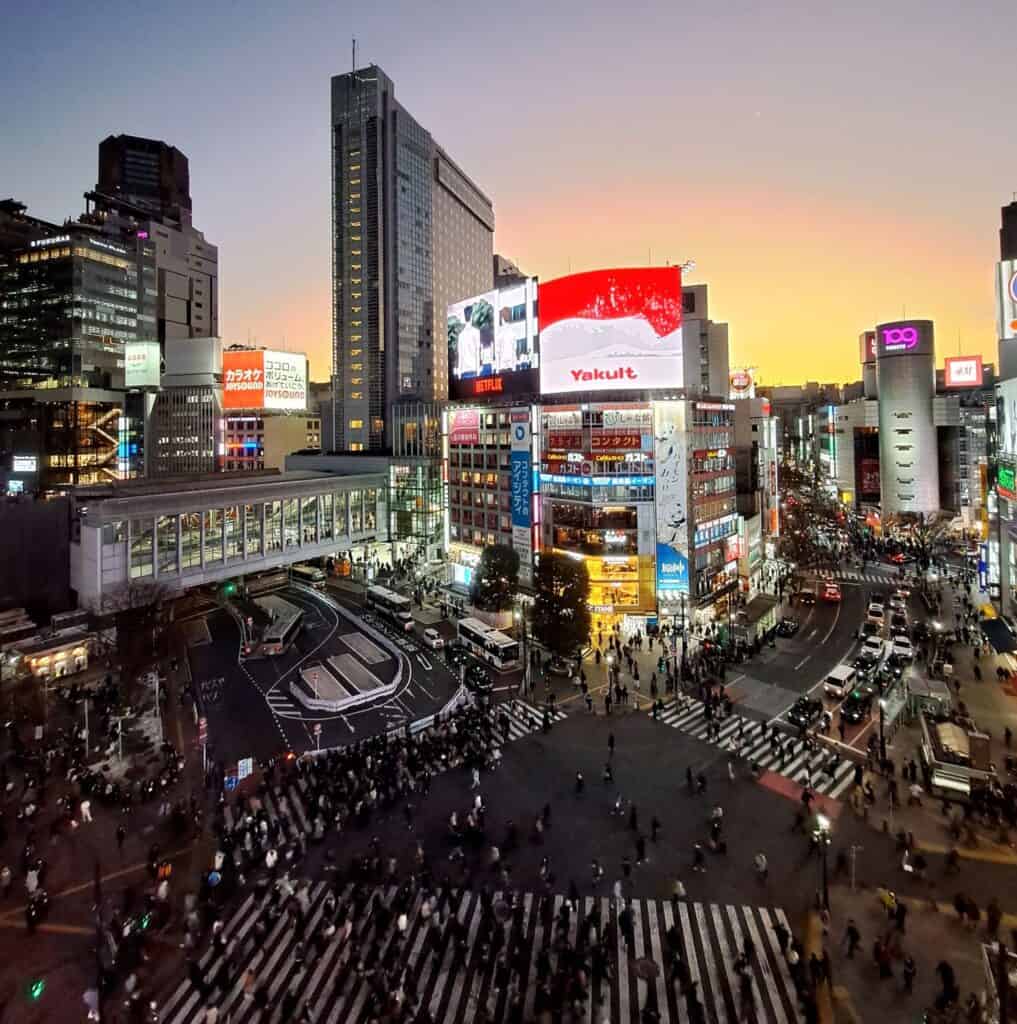
This post may contain affiliate links. I will receive a small commission if you use these links.
Tokyo is often seen as the gateway to Japan and has earned the title of the world’s most populated city. From the wacky, illuminated streets of Akihabara to the infamous Shibuya Crossing and the fun cafes in fashionable Harajuku – Tokyo really is packed full of life!
With all this hustle and bustle, you might be surprised to hear that Tokyo does have a softer, calmer side. Away from the neon city lights, you can find little gems of peace and tranquillity, like the Meiji shrine, wrapped in leafy parkland, or the sprawling gardens of the Imperial Palace grounds.
Tokyo is a diverse and vast city, but with so much to explore, it can be difficult to know where to start when planning your itinerary.
That’s why I’m sharing my 4-day Tokyo itinerary, covering all the best things to see and do in Tokyo in 4 days. I’ll break down which of Tokyo’s neighbourhoods you should visit, and cover some of those all-important questions, like; ‘Do I need a Japan Rail Pass?’ and ‘Is 4 days in Tokyo enough time?’
This Tokyo itinerary is aimed at those who are first-time visitors and covers the highlights of the city. If it is also your first time visiting Japan, you might want to check out my 28 top tips you should know before visiting Japan, where I talk about everything I wished I had known before arriving in Japan!
Contents
Tokyo itinerary: Spend 4 fun-filled days in Tokyo
Before we dive into the best things to see and do in Tokyo in 4 days, let’s cover some important information first.
How to get around Tokyo?
There are two airports in Tokyo: Haneda and Narita. Narita is the main international airport and you will most likely fly into this airport. Narita Airport is just over an hour outside of Tokyo city and you can take either the train or bus from the airport into the city centre.
Money-saving tip: If you are visiting Tokyo on a budget, take the low-cost bus from Narita airport into the city. When you get out of the arrivals hall, turn left and head to the ‘Low-Cost Bus Ticket’ counter. The bus into the city is 1300 yen (£8) per person.
Once you’ve arrived in Tokyo, the best way to get around is via the subway. The subway system in Tokyo is so simple to use. Many of the signs also have directions in English and most of the ticket machines have various language settings. If you are planning to stay in Tokyo for a while, the best way to get around is to purchase a Suica card, which you can just top up. For shorter stays, you can purchase a subway ticket which is valid for 24, 48 or 72 hours.
It is worth noting that if you do decide to purchase a JR pass, you can also use this on some local JR-operated lines that connect various areas of Tokyo.
Do I need a Japan Rail Pass? (Is the JR pass worth it?)
Do you need a Japan Rail Pass? This is one of the most asked questions for people who are visiting Japan. There are differing views on whether the Japan Rail Pass is worth it or not. Here’s my take on it:
If you are travelling across different regions in Japan, for example to Kyoto or Hiroshima, and will be taking a lot of individual trips, then the Japan Rail pass could work out better value. How do I know? Well, when planning my trip to Japan, once I had set out my route, I researched how much each individual train journey would have cost me if I bought the tickets individually. For me, it turned out that the cost of a 14-day JR pass was cheaper than buying all the train tickets individually (not to mention, a lot less hassle, too!).
However, if you are staying only in Tokyo, then you won’t need a JR pass and would be better to get a subway pass or a Suica card instead.
You can find out more about the pros and cons of getting a JR pass here.
How long do I need to visit Tokyo?
Tokyo is a huge city and there are so many different neighbourhoods to discover, it would be impossible to see everything in one trip! However, to see the main sights, you really do need at least 3-4 days in Tokyo. 4 days would give you enough time to explore the main areas of central Tokyo, but if you wanted to venture outside of the city and take some day trips, then 5 or even 6 days would be a good amount of time.
Where’s the best area to stay in Tokyo?
Tokyo is a vast city and, looking at a map, it can be overwhelming when choosing the best area to base yourself. So, how do you decide where to stay in Tokyo?
Tokyo has an amazing transport system, making it really easy to get around. So, it would be best to base yourself near a well-connected train or subway station.
The areas of Shinjuku and Shibuya are two of the most popular areas to stay in the centre of Tokyo. However, they are not the cheapest. I would suggest finding accommodation just outside of these areas. For example, I stayed in Hatsudai, which was just a short subway ride away from Shinjuku. The accommodation I booked was a cosy room in a self-check apartment block called Port House Hatsudai, just a short walk from the subway station in Hatsudai and was great for a few nights.
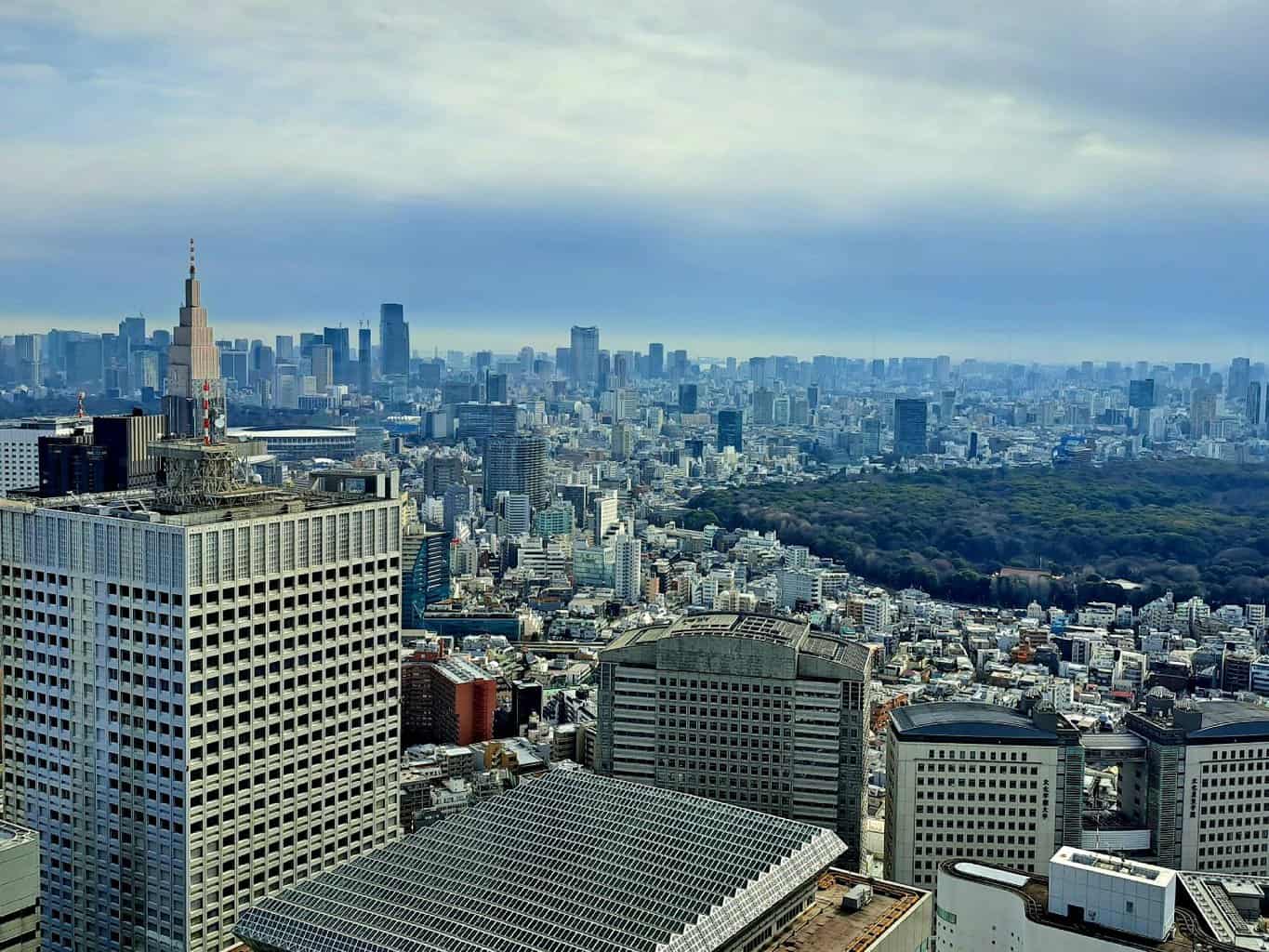
Tokyo itinerary: Spend 4 fun-filled days in Tokyo
Now, let’s get into the good bit – planning out your 4-day Tokyo itinerary!
Tokyo itinerary Day 1 - Shibuya & Harajuku
Shibuya - morning
First up, head to Shibuya and spend some time wandering around the streets here. Shibuya is a big shopping district, and you will find large department stores and well-known brands, mixed in with games arcades and local bars. Shibuya is also home to one of the biggest Don Quijote mega stores – which is basically a huge multi-floor department store that sells everything and anything you could want and need. If you want to visit a Japanese store and pick up some local products – you can buy almost anything here!
Another great place for shopping and dining in Shibuya is Miyashita park. Head to the roof terrace where you will find an urban park to sit and enjoy your takeaway coffee amongst the rooftops.
Time for lunch and why not join a food tour in Shibuya, where you can sample the local dishes and get accustomed to the local traditions and culture around food? If you think that Japanese food is all about sushi – think again. Of course, there is a lot of great sushi, but it is much more than that. Think steaming ramen, fried chicken, beef and vegetables – Japanese food is really fresh, delicious and full of flavour! If you don’t fancy taking a tour, there are lots of great restaurants to suit a range of budgets in Shibuya.
Harajuku - afternoon
In the afternoon, head to the area of Harajuku. This area is quite fashionable and has some unique clothing and accessory shops. It doesn’t really get busy here until the afternoon, so for the best atmosphere, get here after lunch. The area of Harajuku centres around the famous Takeshita Street, where there are numerous shops and pop-up food stalls down this busy street – mostly selling sweet crepes!
And if you are a pancake lover (like me!), then you cannot visit Japan without trying the famous Japanese souffle pancakes. There are many places that serve these but I can personally recommend Rainbow Pancake – tucked down a little side street. A Happy Pancake is also another popular spot.
You can easily spend an hour or so wandering around the area of Harajuku and filling up on sweet treats!
Shibuya - evening
As it starts to get dark, make your way back to Shibuya to get a good spot to watch the famous Shibuya Crossing at peak rush hour.
There are several places to witness the Shibuya Crossing, and of course, you will want to cross it for yourself, but it is best viewed from above.
The Shibuya Sky observation deck is one of the most famous viewing platforms in Tokyo and offers incredible views over the city. As it is a popular spot, it is best to book your tickets in advance to avoid queuing. Entrance costs 2,200 YEN or £12.09.
The Sky deck is at the top of the Shibuya Scramble Square building and the entrance to the observation deck (known as the Skygate) is on the 14th floor of the building. At the entrance, you simply show your ticket QR code on your phone, lock your belongings in a locker and take the escalator in small groups up to the 46th floor and the observation deck. Top tip for visiting the Shibuya Sky deck – check the sunset times in advance! The best time to view the Shibuya crossing is at sunset, so plan ahead when booking your tickets and selecting your time slot.
If you are visiting Tokyo on a budget, another great place to view the Shibuya Crossing is in the Mags Park building – Go to the roof terrace or visit one of the bars on the 7th floor for a great view overlooking the road.
Finish your day in Shibuya with some more great food – Nonbei Yokocho is a great little area of narrow alleys lined with small local restaurants and bars. The food court of the Miyashita Park shopping mall also has a great bustling atmosphere, with lots of small restaurants all in one place.
Tokyo itinerary Day 2 - Meiji Shrine & Shinjuku
Meiji Shrine & Yoyogi Park
After a busy first day in Tokyo, start your second day a little more relaxed with a visit to Meiji Shrine.
Meiji Shrine is dedicated to the spirits of Emperor Meiji, who was the first modern emperor in Japan, ascending the throne in 1867. The shrine is a traditional wooden structure, set in beautiful leafy surroundings. If you have travelled to Thailand and visited the temples there, you’ll notice that the temples in Japan are much less colourful and more understated than the temples you might see in Bangkok or Chiang Mai, but the Japanese Shrines are beautiful in their own way, with intricate details carved into the wooden structure.
Once you have visited the shrine, take some time to enjoy the peaceful gardens and forest of Yoyogi Park. Both the Meiji Shrine and Yoyogi Park are walking distance from Harajuku station where the metro and JR lines connect you with other areas of the city.
Metropolitan Government Building
Leaving Yoyogi Park, make your way towards the Metropolitan Government building and head up to the observation deck for incredible views over the city.
Unbelievably, the observation deck at the Metropolitan Government building is completely free of charge. As you approach the building, simply follow signs for the ‘observation deck’ and as you enter, you will be greeted by friendly staff who will do a quick security check and send you up in the lift.
The observation deck is all indoors, but the floor-to-ceiling glass walls provide almost 360 views of the city. On a clear day, you can even see Mount Fuji! There is a small cafe and gift shop and you can spend as much time as you like here. If you are visiting Japan on a budget, this is without a doubt one of the best free things to do in Tokyo. If you have time to come back in the evening, it is also one of the best places to watch the sunset in Tokyo, too!
Shinjuku
For lunch, make your way to the bustling hub of Shinjuku. The neighbourhood of Shinjuku is one of the most popular in Tokyo, especially with tourists and first-time visitors. Here, you will find lots of shops, games arcades and great hot pot restaurants and local izakayas.
After lunch, spend the afternoon wandering around Shinjuku and soaking up the bustling atmosphere. Make sure to visit Hotel Gracery for a look at the infamous Godzilla climbing the hotel! Try your luck in one of the game arcades – Taito Arcade is one of the main arcade chains in Japan, but there are plenty of smaller ones too. Arcades are serious business in Japan and they are everywhere in big cities like Tokyo. Even if you don’t want to gamble yourself, it’s fun to watch others on the grabber machines!
If you are craving some space after spending the afternoon in the city, head to the Shinjuku Gyoen national garden. The 144 acres of parkland and gardens are the perfect antidote to the bright lights of central Shinjuku and the entrance is only 500 yen (£2.75)
Finish your day back in the central hub of Shinjuku and try and grab a prized seat in one of the tiny izakayas along Omoide Yokochō Street for a great atmosphere, local beer and food.
Tokyo itinerary Day 3 - Asakusa & Akihabara
Asakusa
For your third day in Tokyo, we are heading to the area of Asakusa. This traditional Japanese ward was one of my favourite areas of Tokyo and it did remind me a little of some of the areas we visited in Kyoto.
The quickest way to get to Asakusa is to take the Metro to Asakusa station. However, if you are travelling elsewhere in Japan and have purchased a JR pass, you can use your JR pass on the Chuo line to Tawaramachi Station and walk from there.
Senso-ji temple and Nakamise shopping street
The main attraction in Asakusa is the impressive Senso-ji temple and Nakamise shopping street.
Start at Kaminarimon Gate and slowly make your way up Nakamise street, stopping at the various shops and cafes along the way. A word of warning – it does get incredibly crowded here – we made the mistake of visiting around lunchtime and we were shuffling our way up the street! Once you’ve made your way up Nakamise street to the other end, you’ll arrive at Hōzōmon Gate, guarding the entrance to Senso-ji.
Senso-Ji is the oldest temple in Tokyo, dating back to 645 when it was built to honor the goddess of Mercy. Take your time wandering around the temple complex, including the main temple building, five-storied pagoda and gardens.
If you haven’t filled up on delicious treats and snacks at the food kiosks on Nakamise Street, then after visiting the temple, head to one of the izakaya bars on Hoppy Street for lunch.
Tokyo Skytree Tower
Before you leave Asakusa, now is a good opportunity to visit the Tokyo Skytree observation tower. Jump on the Tobu Skytree Line from Asakusa station and cross over the river. The Tokoyo Skytree offers one of the best city skyline views in Tokyo from the Tembo observation deck on floor 350 of the impressive tower. It’s worth booking your ticket in advance to avoid the queues – you have the choice of buying a ticket for just the Tembo deck, or a combination ticket which includes access to the galleria on the 450 floor, too. You can also purchase tickets which include entrance to the Sumida aquarium which sits next to the Tokyo Skytree.
Akihabara
As the evening draws near, jump back on the train or metro and ride it until you reach Akihabara. If you thought Shibuya and Shinjuku were bright with their neon lights, then Akihabara is on another level!
Akihabara is well known as the Tokyo hub for electronics retailers, gaming shops and arcades. If you are interested in gaming and anime then you’ll want to visit the exhibits in the Tokyo Anime centre, as well as Radio Kaikan – a multi-level shopping complex specialising in trading cards, manga and anime. If you’re feeling nostalgic, make sure you check out Super Potato – a mish-mash shop full of vintage video games and consoles.
Even if gaming is not your thing, it’s great to just take it all in!
Tokyo itinerary Day 4 - Daytrip from Tokyo
There is so much to see and do in and around Tokyo, it can be hard to fit it all into just 4 days! So, for your final day in Tokyo, here are a couple of options to choose from:
Option 1 - Minato, Tokyo station & Ueno
Minato
Minato is a lesser-visited area of Tokyo, but if you have the time, it’s nice to pop by and visit the Tokyo Tower and the small temple that sits under it.
To get to Minato you can either take the JR line to Hamamatsuchō Station or if you have a subway ticket, you can get off at Shibakoen or Kamiyachō station.
As you might have gathered by now, Tokyo is a city with plenty of observation decks, giving you lots of opportunities to see the city from above. The Tokyo Tower in Minato is reminiscent of the Eiffel Tower in Paris, and like the other observation decks in Tokyo, has impressive views over the sprawling city. You can pay to access the main deck or go all the way to the top deck, but I’d recommend buying your tickets in advance to avoid queues on the day.
After you’ve visited the tower, see the small Zojo-Ji temple and gardens and stroll through Shiba Park before jumping back on the train towards Tokyo Station.
Tokyo Station & the Imperial Palace
The area around Tokyo Station is more of a business district, with lots of tall office buildings and high-end restaurants, but from here you can walk the short distance to the Imperial Palace and Gardens.
The palace itself is quite small, but the gardens are beautiful and a great place to spend a peaceful hour or so, away from the busy, noisy city.
Once you’ve finished at the Imperial Palace, head back to Tokyo Station. The shopping area underneath the station is like a destination in itself! If you’re hungry and ready for lunch, visit Ramen Street at the station for delicious noodles. If you are a Pokemon fan, don’t leave without making the short walk from the station to the Pokemon DX centre.
Ueno
From Tokyo station, take the short train journey to Ueno station and walk to Ueno Park. Ueno Park is a very popular park within the city and is home to the Ueno zoological gardens and several museums including the Tokyo Art Museum, Nature and Science Museum and also the Tokyo National Museum. You’ll also find several walking paths around the park, as well as a small boating lake, which surrounds the small Benten-do shrine. If you are visiting at the end of the day, the Benten-do shrine has lanterns which are illuminated at night and look beautiful as the light reflects on the surrounding lake.
Option 2 - Mount Fuji Daytrip
Mount Fuji is one of the most famous natural landmarks in Tokyo (and Japan), so it makes sense that you would want to check it out!
The best way to visit Mount Fuji is by joining a day tour from Tokyo. There are so many different day tours to choose from, depending on what kind of experience you want to have and how much you want to spend.
However, if you are visiting Tokyo on a budget or would rather travel on your own than take a tour, there are a couple of other options:
Visiting Mount Fuji by bus: You can take a bus from Shinjuku station in Tokyo to either Lake Kawaguchiko or Fuji-Q Highland. The cost for a return ticket starts from 4400 yen / £24.00 and takes about 1 hour 45 minutes each way.
Visiting Mount Fuji by train: The Fuji Excursion train takes you from Shinjuku station to Mount Fuji. If you have already purchased a JR pass, you may be able to use it on this line – just make sure that you double-check with the ticket office that your pass covers this area.
What to do in Mount Fuji
One of the most popular things to do around Fuji is to ride the famous Kachi Kachi (Panoramic) Ropeway. It is one of the best places to get a great photograph of Mount Fuji, although it is not for the faith hearted! If that doesn’t sound appealing, visit the Kawaguchiko Music Forest Museum and stroll through the themed landscaped gardens, check out the 5-storied Chureito Pagoda, visit the village of Oshino Hakkai, or head to the Fuji 5th Station for incredible views of Mount Fuji.
How to get around Mount Fuji
Once you arrive in Fuji, you have a choice of 5 different buses which you can hop on and off to get around the area, making it really easy.
Option 3 - DisneySea
For families visiting Japan (and big kids!), you may decide to spend your last day in Tokyo with a trip to DisneySea theme park. DisneySea is one of the most popular them parks in Japan, alongside Universal Studios in Osaka, so it is recommended to book your ticket in advance. You can easily travel by bus to DisneySea from central Tokyo, making it a great day trip!
That wraps up my Tokyo 4-day itinerary. Tokyo is a big place and there’s a lot of ground to cover, so you won’t get to see it all in just a few days, but this itinerary covers most of the main ‘highlights’ and not to miss sights that the city has to offer.

